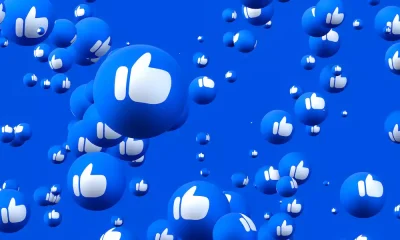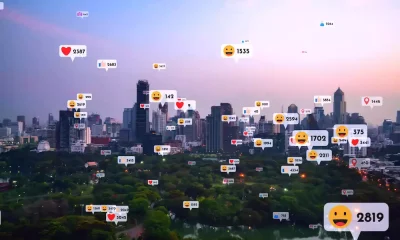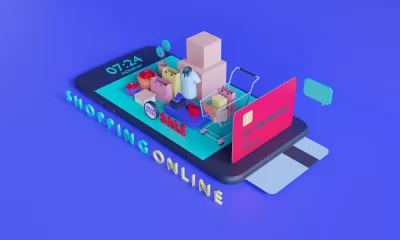Social Media
The Impact of Social Media on Students Mental Health

Students use social media for various reasons, including staying connected with friends and family, sharing their thoughts and experiences, learning and staying informed networking, and entertainment. They also use social media platforms like Facebook, Instagram, Snapchat, and Twitter to communicate with one another, share content and media, and participate in online communities centered around shared interests and hobbies.
Adverse Effects Of Social Media
However, it’s important to note that excessive use of social media can also negatively affect students, including decreased face-to-face communication skills, cyberbullying, and potential addiction.
Students’ mental health is affected by social media. Spending too much time on social media can lead to anxiety, depression, and more in this short overview, we look at the impacts of social media, both positive and negative. Understand the risk factors to be aware of and strategies for ensuring students’ safe use of social media.
Students are on a journey of learning and discovery to gain knowledge and qualifications to choose a career in business, industry, or public service like medicine.
Billions Of Users
What is acknowledged and widely accepted is social media can be a powerful tool for connecting with friends, family, and the world. There are some 4.6 billion people on social media. Quite an impressive statistic from Statistica, which predicts by 2027, users of social media will grow to 5.85 billion.
If you’re not on social media, you’re missing out on connecting with like-minded people and learning about business, industry, and its players. How students work out what they want to do after studying most likely comes from communications on social media. For example, LinkedIn is a social network site for business people, and it’s where people share information about their careers, job, what they are looking for in their next role, and so on.
But social media can also have dangerous side effects on students if not used in a healthy, mindful way. This article discusses the potential impact of social media on student mental health and how to protect against its risks.
Understand the Impact of Social Media
Today, it’s essential to understand the impact of social media on students’ mental health. Social media use is linked to a variety of mental health risks, including
- Low self-esteem
- Anxiety
- Loneliness
- Depression
Research has shown that increased exposure to certain types of social media can exacerbate existing psychological vulnerabilities and, in some cases, can lead to severe mental health issues. Therefore parents and educators need to understand the impact of social media on students’ mental health so they can identify warning signs and help students practice better online habits for their overall well-being.
Not just students suffer from mental health risks associated with social media. Everyone using any social media platform is vulnerable to cyberbullying by colleagues, peers, and trolls. In fact, the higher your profile, the more likely you will get negative comments, and too many will affect your mental well-being.
How To Identify The Risk Factors
Recognizing the signs or risk factors contributing to poor mental health can help you get ahead. To support student mental health, anyone who requires insight and tools to control the potential risks associated with social media use.
Several factors can contribute to mental health issues among students and young adults, including:
- Spending too much time online
- Engaging in excessive self-comparison with others on social media
- Experiencing cyberbullying and online trolling
- Being exposed to potentially traumatizing content
Create Strategies To Cope With Negative Content
Students and anyone exposed to these risks need people to support them. It could be parents, educators, employers, friends, or colleagues that recognize risk factors with social media use, help with coping skills, and mentor healthier relationships with social media platforms.
Content such as likes, shares, and comments can either lift your mood and positively impact your mental well-being or bring you down.
Promote Positive Social Media Use
Days may be lost to feeling down; this is lost productivity for businesses. Therfore employee mental wellbeing at work is a priority for businesses. For education providers, it’s students falling behind in their curriculum. Promoting positive social media use makes sense whether you’re an educator, business owner, or parent.
Digital literacy
Developing school-wide strategies is an essential step to ensuring social media use by students is safe and healthy.
Policies
For example, schools should establish clear policies about appropriate digital content and behavior for students.
Digital literacy lessons
Plus, schools and businesses should provide digital literacy lessons either online or in the classroom so students can develop a positive online presence.
Collaboration
Education providers and businesses can also host online classroom discussions about how technology affects mental health.
Some businesses would welcome the opportunity to provide content on other topics, like online security and keeping personal data safe online. One solution is to offer a secure platform for students to express emotions, so the expressions lead to more positive experiences with social media.
Self-care
Encouraging students to practice self-care when engaging on social media platforms can also help reduce any potential adverse effects of excessive use.
Final Thoughts
While students are particularly vulnerable to mental health issues due to social media use. Women and LGBTQ+ are the most likely targets.
We all are responsible for knowing the signs, including excessive online time, loss of confidence, and evidence of self-harm. Most young people say they’d step in if they could do it anonymously – and one question is – should social media sites be doing more?
It’s not only stepping in but knowing how to respond to the cry for help. Unicef has contacted a few of the leading social media sites for answers.









